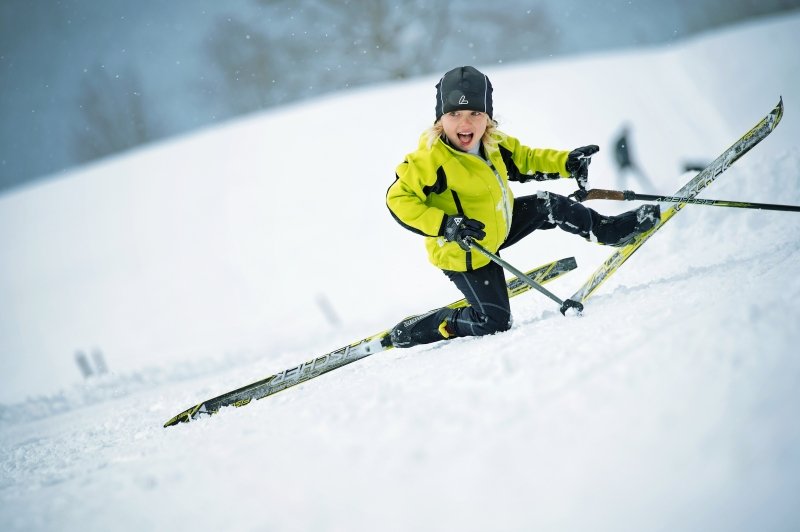Snowshoeing with the kids
Not everyone who visits a ski resort wants to or is able to ski or snowboard, so resorts offer other activities. Among those options, guests can explore and enjoy the outdoors on snowshoes. These snowshoe outings at ski resorts range from guided naturalist tours to nearby destinations to athletic fitness treks reaching the top of the mountain. Snowshoeing options at ski resorts are booming and becoming ever more creative.
Smuggler's Notch Resort known as a prime Vermont family destination has one of the most comprehensive mixes of snowshoe programs available. There are snowshoe treks for families with young kids, and outings for adults or families with older kids, who want a bit more in terms of the length of the trek, the topography covered, and the insights shared about the natural world and outdoor skills.
Programs are scheduled for specific days and times at different prices for adult and children. Special family snowshoe programs that are easy include the Fireworks Snowshoe Tour (Thursdays 7-8:30 PM) , which is a guided snowshoe trek after dusk through the woods to a rustic pavilion and bonfire.
The guided treks can cater to individual needs and 1.5 hour snowshoe lesson trek is Sunday at 10 AM. Family Scavenger Hunts are held 3 times per week. The High Elevation Trek is Mon and Fri at 1:15 PM while the Backcountry Snowshoe Trek is on Wed and Sat at 1 PM. Winter Survival is on Tue at 10 AM.
The Blue Snowshoe Trail at Pat’s Peak
Pat’s Peak in Henniker, NH offers three snowshoe trails (Green, Blue and Black corresponding with different levels of difficulty) that are connected in a 4 mile loop. There is no charge to use these trails and they are signed but not maintained. Snowshoes are available to rent for $19 and trail maps are available or can be download.
Beaver Creek Resort in Avon, CO has a variety of snowshoe tours via the Strawberry Park Express chair lift. There are morning or afternoon snowshoe tours that are $125 not including the gear. Private 3-hour tours are $485 and all day tours are $725. An equipment rental package is available which includes boots, poles and snowshoes for $50 a day or $39 for a half day (less for kids or seniors).
Legacy Park is a destination for snowshoers
At Crystal Mountain in Thompsonville, MI, there are guided snowshoe tours available on the golf course for $25 including the snowshoes or go snowshoeing on your own with a 1-hour snowshoe rental for $15. One of the popular treks is to the Michigan Legacy Art Park, which is a 30-acre preserve on 1.6 miles of hiking trails within Crystal Mountain. The Art Park features 45 sculptures (20 in the winter), poetry stones, an outdoor amphitheatre (open in the summer) and there is a donation box.
Stop by the Base Camp at Big Sky Resort in Montana for snowshoe adventures. They have a 2-hour snowshoe tour on the Moose Tracks Gully Trail for up to 10 people at a time led by two local women guides. There are designated trails for snowshoers to go out on their own, but they are asked to pay a $5 trail pass. Click for the resort website video about the guided snowshoe tours that are available at $89 for guests aged 12 or older at Big Sky Resort .
Back in Vermont, a resort that presents a different option is Mount Snow where snowshoe tours are available via the Grand Summit Hotel lodge's NatureSpa. There are planned and marked 60-90 minute trail routes at the ski area for the Woodland Tour (recreational) or the Fitness Tour (vigorous uphill). The unique "Guided Snowshoe Tour & Massage," includes a guided snowshoe tour followed by a sorely “kneaded” massage after returning to the spa for $195. Snowshoes are available to rent.
Guided snowshoe tours take about an hour for $55 per person including the snowshoes, poles and a group guide. There are also private tours available and outings offered to people who are more athletic and looking for a fitness workout on snowshoes or an environmental tour with a local Vermonter talking about animal tracks or local geography. Trail maps for snowshoers are available at Mount Snow Sports, where snowshoe rental equipment and a trail pass can be acquired.
It may be necessary for some of the Smuggler's Notch snowshoe treks to be on the alpine slopes due to low snow in the valley. Some snowshoers use the lifts to access a high elevation tour and a backcountry tour. The Smuggler's Nordic Director commented, "When the skiers saw the people snowshoeing on the slopesides, they wanted to get out of their skis to come and try it."










